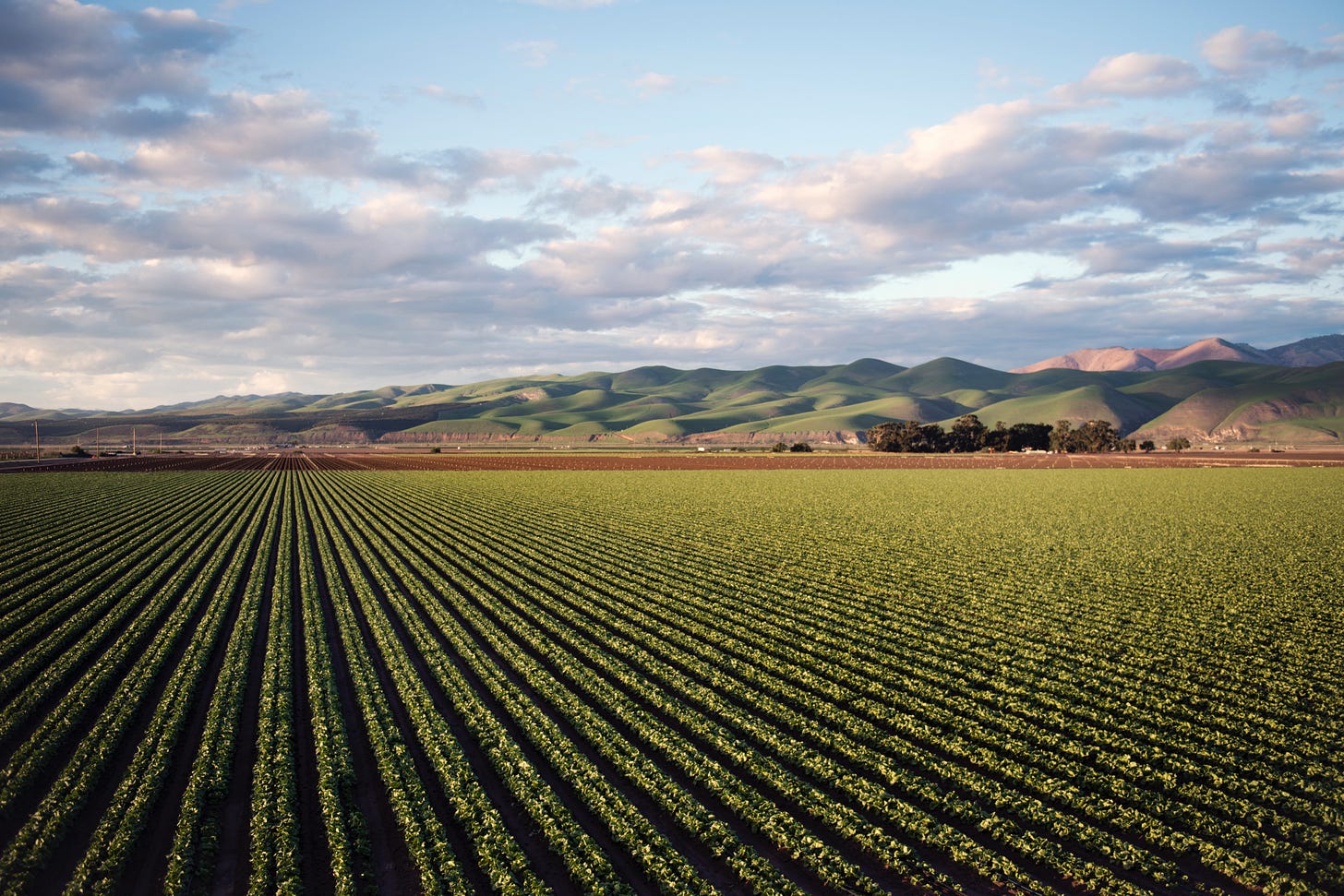Changing SNAP Benefits and Food as Medicine Go Hand in Hand
As assistance programs and policies come under fire, can Food as Medicine effectively meet our needs?
The more I learn about food as medicine, the more I’ve been able to recognize two key themes across the many programs that work in this growing space. The first is the role that nutritious food consumption plays in our wellbeing. It may seem obvious to those of you reading this that our health suffers without access to healthy food, but it bears repeating. Particularly because the second theme that keeps resurfacing is the role that food as medicine interventions can play in ensuring access to food itself.
If we’re to address the issues that have made it necessary for food as medicine interventions to exist in the first place, then we have to talk about why so many people cannot afford to meet their basic nutritional needs. Food insecurity is a poverty issue, which is why it was so disheartening to read about the decision by Congress to require all states to end emergency allotments of SNAP (Supplemental Nutrition Assistance Program) by March 2023. These allotments provided households receiving SNAP with anywhere from $95 to over $200 in additional benefits per month,1 and this decision means a significant decrease in benefits, potentially leading us to the edge of a “hunger cliff”.
What do SNAP Cuts Have to Do With It?
SNAP is by no means a perfect program; many have long critiqued its inability to effectively meet the actual needs of its recipients. In particular, confusing eligibility requirements may keep families with unpredictable paychecks from the consistent support they need.2 And yet, since its implementation in the mid-1960s, the program has significantly reduced food insecurity, improve health outcomes, and lower healthcare costs.3 The Thrifty Food Plan, which is used to determine SNAP benefit amounts, was significantly updated for the first time since SNAP’s founding in 2021 and has thankfully allowed for a slight expansion of benefits.4 However, further cuts to SNAP are may be on the horizon.5
Some argue that cuts to SNAP is the most straightforward way to address the nation’s federal budget deficit. But closer scrutiny finds that this argument does not have weight. The Rockefeller Foundation notes that the U.S. spends over $1 trillion on healthcare for diet-related diseases, an amount that is equivalent to the money we spend as a nation on food itself.6 SNAP recipients who can no longer access healthy and nutritious food often end up needing more extensive (and expensive) care to treat diet-related diseases and chronic illnesses. This drives up costs and, more importantly, creates unnecessary amounts of misery and lives lost that could have been prevented.
Food as medicine interventions will have a unique role to play in this shifting landscape. Some argue that SNAP itself is a food as medicine program, depending on your definition of what food as medicine means.
Regardless, interventions such as produce prescriptions or medically tailored meals often evaluate eligibility based on whether recipients receive SNAP, Medicare, or Medicaid. If SNAP eligibility were to become more restrictive, it’s possible that food as medicine programs could step in to still ensure Medicaid and Medicare recipients get access to the food they need. Advocacy for and investment in food as medicine programming could also drive home the importance of programs that provide people with access to nutritious foods from a cost- and life-savings perspective.
The Farm Bill May Offer Answers
The Farm Bill is a massive piece of legislation that is reevaluated and passed every five years. It’s responsible for authorizing spending on multiple components of our food systems, from farm subsidies and conservation to nutrition programming like SNAP. (See below for a helpful primer on the Bill and its history).
The Farm Bill is currently under evaluation this year, and the decisions made by Congress on what’s included, or excluded, will have significant consequences on the future of our food system, especially SNAP and food as medicine. But before looking ahead, it’s important to understand how previous Farm Bills have helped shape the food as medicine landscape. The Gus Schumacher Nutrition Incentive Program, otherwise known as GusNIP, was significantly expanded via the 2018 Farm Bill to provide funding for projects increasing fruit and vegetable consumption, laying the groundwork for many produce prescription programs we see today. Since the program’s founding, over $100 million has been distributed to over 100 projects across the country.
The 2023 Farm Bill is predicted to cost $700 billion over its next five year run, and will set the stage for debate on many competing priorities related to food, nutrition, climate change, and infrastructure. The bill has the potential to expand or cut federal funding that could significantly impact future innovations in the food as medicine space. The funding machine for food as medicine interventions relies significantly on these federal dollars to distribute as grants that are utilized by community-based organizations to expand or establish their services.
Advocates are already sounding the alarm that the hunger and SNAP priorities of the bill must be expanded to adequately meet the hunger cliff on the horizon.7 Food access advocates are pushing for expanding SNAP benefits and reducing eligibility requirements to make it more accessible,8 while a mostly Republican faction is pushing for the opposite.9 The decisions, once in place, will have lasting implications on the future of our food system, both in terms of its sustainability and its ability to feed all Americans. It's an opportunity for a massive influx of investment in food as medicine and SNAP access, or a risk that these programs will significantly shrink, increasing poverty in equal measure.
Tech to the Rescue?
We won’t know how the Farm Bill will shake out until later this year. But for those of us (aka me) who are impatient and want to see solutions being implemented now, the intersection of food as medicine and technology offers some inspiration. The rise of value-based care and startups turning their attention to social determinants of health, larger tech companies like Instacart and AboutFresh are exploring building out food as medicine programs of their own.
These opportunities are unique because they sit outside of the policy and political roller-coaster. In many cases, they’re funded by a mix of both capital investment by venture firms and by partnerships with healthcare institutions or insurance companies. Companies like NourishedRX or Season offer customized and tech-driven solutions that track participants’ improving health and make a cost-savings case that an ounce of prevention is with a pound of cure. If funds to nutrition benefits programs are cut in the next Farm Bill, we may be turning to the tech industry for solutions that can help to bridge the gap.
SNAP itself relies on the private sector and free market systems to connect recipients to food at grocery stores, so is it that far-fetched to turn once more to the private sector for some much needed innovation? I’m still both skeptical and optimistic, but one thing is clear: with SNAP and other food and nutrition policies hanging in the balance, we will need all the support and investment we can get to ensure everyone still gets access to the food, and health, they deserve.
Question of the month:
What do you think about the impact of SNAP and the Farm Bill on Food as Medicine? Are you excited about tech-based solutions? What do you think the future will hold?
Book on the brain:
Stuffed and Starved by Raj Patel. An incredible read about the troubling irony that today’s world hosts both more starving people and more people who are overweight than ever before. This a great primer on global food systems and will help build an understanding for how we continue to produce so much food while people still struggle to access what they need to be healthy.
https://hungersolutionsny.org/federal-nutrition-programs/snap/end-of-snap-ea/
https://www.usatoday.com/story/news/nation/2022/11/17/unpredictable-income-food-stamps/8318547001/
https://www.cbpp.org/research/food-assistance/snap-is-linked-with-improved-nutritional-outcomes-and-lower-health-care
https://www.foodpolitics.com/2021/08/splendid-news-usda-updates-thrifty-food-plan-and-snap-benefits/
https://www.cbpp.org/research/food-assistance/families-older-people-in-every-state-at-risk-under-proposed-snap-rule-that
https://www.rockefellerfoundation.org/initiative/food-is-medicine/
https://frac.org/wp-content/uploads/Priority-SNAP-Legislation_R3.pdf
https://frac.org/wp-content/uploads/Priority-SNAP-Legislation_R3.pdf
https://civileats.com/2023/03/20/farm-bill-explainer-2023-bill-snap-nutrition-climate-smart-farming-commodities-insurance-congress/








